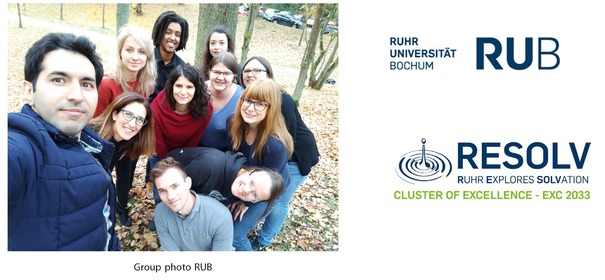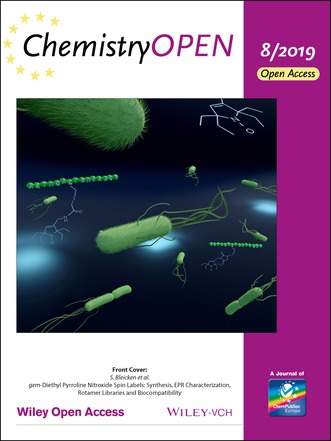Abstract
Invited for this month's cover picture is the group of Professor Enrica Bordignon at the Ruhr University Bochum. The cover picture shows an artistic view of E. coli cells and two spin‐labeled recombinantly produced proteins, which can be inserted into the cells for EPR studies. The primary sequence of the proteins is schematically shown with the one‐letter amino acid code, and cysteine residues are functionalized with the two new gem diethyl nitroxide spin labels designed to better sustain the reducing cellular environment. Read the full text of their Full Paper at 10.1002/open.201900119.
What is the most significant result of this study?

Gem diethyl protecting groups increase the stability of nitroxide probes against chemical reduction at different extent, depending on the reducing agents present in different cellular environments.
How would you describe to the layperson the most significant result of this study?
To study how proteins change their structure in their cellular environment, we can attach to them some specific chemical labels and measure for example how the distance between these labels changes during protein function. Towards this end, new chemically stable probes are needed which survive into cells. We found that different cells have different reducing agents, which need to be taken into account to optimize these new strategies.
Who designed the cover?
Prof. Dr. Enrica Bordignon and Dr. M. Hadi Timachi.

S. Bleicken, T. E. Assafa, H. Zhang, C. Elsner, I. Ritsch, M. Pink, S. Rajca, G. Jeschke, A. Rajca, E. Bordignon, ChemistryOpen 2019, 8, 1035.
Contributor Information
Prof. Dr. Andrzej Rajca, Email: arajca1@unl.edu
Prof. Dr. Enrica Bordignon, Email: enrica.bordignon@rub.de.


